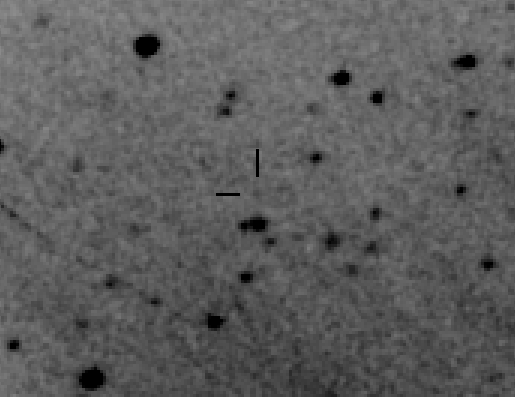Observation by Paul Leyland: Caliban - or Uranus XVI
Uploaded by
Test User
Observer
Paul Leyland
Observed
2020 Jan 13 - 21:46
Uploaded
2020 May 15 - 21:26
Objects
Uranus
Equipment
- 0.4m f/6.5 Dilworth-Relay
- Starlight Xpress Trius-PRO SX814 CCD
Exposure
297×30s average-stacked
Location
Tacande, La Palma
Target name
Uranus XVI
Title
Caliban - or Uranus XVI
About this image
This week we feature something which is definitely NOT a "Gee Whiz" object. Rather, this is a demonstration of what is possible using amateur equipment and a bit of clever research. The 16th satellite of the planet Uranus (Caliban) was discovered with the 5m Hale telescope at Palomar in September 1997. It is a rather small body, estimated at only 72km in diameter, and is a dark reddish colour with an estimated albedo of only 0.04 — about half that of the Moon. No high resolution images exist because it was not discovered until long after the Voyager 2 fly-by mission.
Because Caliban is so small, so dark and so far away it appears very faint as seen from the Earth. At the time Paul's image was taken the predicted magnitude was 22.2, so a long exposure time was required to make the satellite visible at all. Luckily Uranus and its moons were near a stationary point in its apparent orbit and Caliban moved less than two arc seconds during the three hour observation, making stacking the numerous sub-images very easy. Even with an exposure that long Caliban is at the limit of detectability with the equipment that Paul is using. The signal to noise ratio was barely 3 and careful contrast enhancement was required before the satellite became clearly visible.
The object is presented in negative format to make it easier to see.
Files associated with this observation
Like this image
Copyright of all images and other observations submitted to the BAA remains with the owner of the work.
Reproduction of work by third parties is expressly forbidden without the consent of the copyright
holder. By submitting images to this online gallery, you grant the BAA permission to reproduce them in
any
of our publications.


